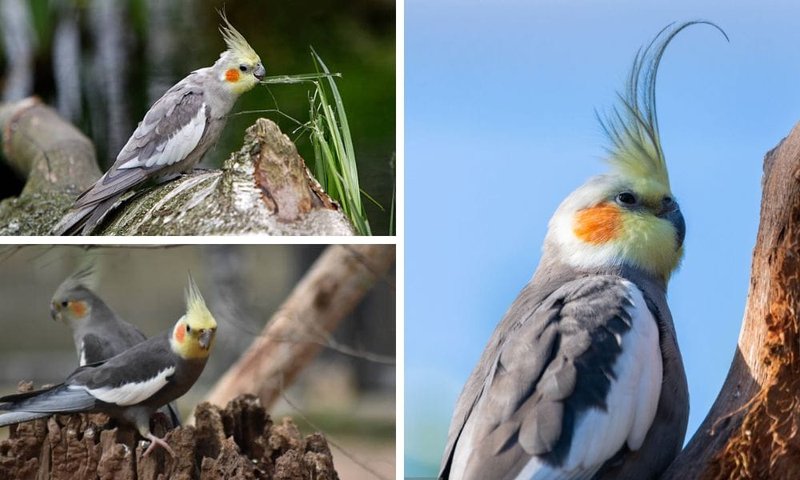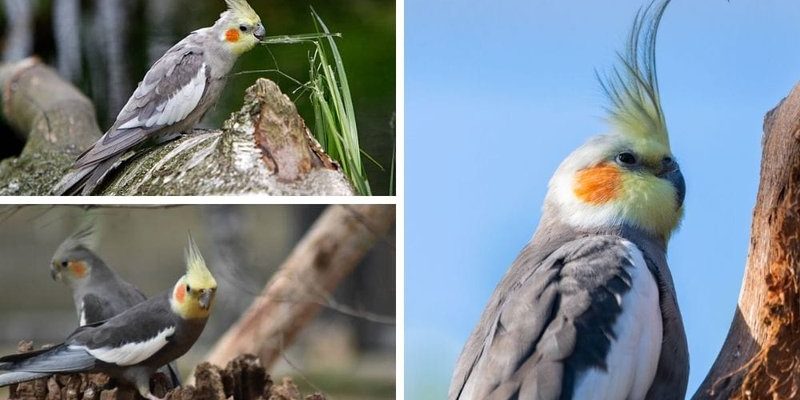
Cockatiels are native to Australia, where they thrive in the wild, mostly in open grasslands and scrublands. Imagine them flitting through the trees, searching for seeds, nuts, and fruits. When you bring one into your home, it’s vital to offer a diet that mimics what they’d naturally forage for. So, let’s dive into the delightful world of cockatiel cuisine and their foraging behavior!
Understanding the Cockatiel’s Natural Diet
Cockatiels are primarily seed eaters, but their diet in the wild is a bit more complex than just seeds. They munch on a variety of foods, including grains, fruits, and even some vegetables. In their natural habitat, you’d often spot them scouring the ground for seeds—mostly from grasses and bushes. This natural foraging behavior is vital for their health, as it encourages both physical activity and mental stimulation.
A typical wild diet includes:
- Seeds: These are usually the mainstay of a cockatiel’s diet, especially seeds from grasses. They love sunflower, millet, and canary seeds.
- Nuts: Occasionally, they may find and enjoy various nuts, which provide healthy fats and protein.
- Fruits and Vegetables: Cockatiels will also eat fruits like apples, berries, and greens, which help keep them hydrated and provide essential vitamins.
You might be wondering why this matters for your pet cockatiel. Well, just like we enjoy a variety of foods, a diverse diet is crucial for your bird’s health. It prevents nutritional deficiencies and keeps them happy and lively!
How Cockatiels Hunt for Food in the Wild
When it comes to foraging, cockatiels are adaptive birds that use a mix of sight and sound to locate food. Picture them delicately landing on the ground, cocking their heads side to side, listening for the faint rustle of seeds. It’s a beautiful dance of nature that showcases their intelligence and instincts.
Here are some key behaviors they exhibit while foraging:
- Visual Scanning: They rely heavily on their sharp eyesight to spot potential food sources from a distance.
- Ground Scratching: Once they find a promising area, they’ll hop around, scratching the ground with their feet to uncover hidden seeds.
- Social Foraging: Cockatiels often forage in flocks. This social behavior increases their chances of spotting food and provides safety from predators.
Watching your cockatiel mimic these behaviors in a safe, home setting can be fascinating. You might even catch them exploring their cage in search of hidden treats!
Feeding Your Cockatiel: What to Include
As a pet owner, you have the power to shape your cockatiel’s diet! A good mix of commercial pellets, fresh fruits, and vegetables, along with occasional seeds, is ideal. It’s like packing a balanced lunch for your feathered buddy, making sure they get all the nutrients they need to thrive.
Here’s what to keep in mind when feeding your cockatiel:
- Pellets: These should make up about 60-70% of their diet. They’re formulated to provide essential nutrients.
- Seeds: Offer seeds in moderation, as they’re high in fat. Use them as treats rather than staples.
- Fresh Foods: Introduce a variety of fruits and veggies, like carrots, leafy greens, and apples, but avoid avocados and chocolate, which are toxic to birds.
You might find your cockatiel has its favorites, and that’s totally okay! Just ensure a balanced approach.
The Importance of Variety in Their Diet
Just like we get bored eating the same thing every day, your cockatiel will thrive on variety. Offering different foods keeps mealtime exciting and fulfilling for them. It not only satisfies their taste buds but also ensures they’re getting the right mix of vitamins and minerals.
Think of it this way: if you only ate one food for every meal, you’d likely feel sluggish and unsatisfied. Here’s how you can introduce variety:
- Rotate Fruits and Vegetables: Each week, change up the selection of fruits and veggies you offer. Try new items to discover what your bird enjoys!
- Include Different Seeds: Consider different seed mixes and blends, but always check the nutritional content.
- Experiment with Treats: Occasionally offer healthy, bird-safe treats like whole grain pasta or cooked beans.
This variety not only boosts their nutritional intake but also keeps their mind engaged, encouraging natural foraging behaviors.
How to Encourage Natural Foraging at Home
Creating an environment that mimics the wild can significantly enhance your cockatiel’s well-being. You want to encourage them to engage in natural foraging behavior, which can be super fun and rewarding for both of you!
Consider these simple strategies:
- Foraging Toys: Invest in toys that require your cockatiel to work for their food. These toys can challenge them to think and play at the same time.
- Hide Treats: Scatter small treats around their cage or play area to encourage searching. This mimics their natural instincts to hunt for food.
- Offer Hanging Foods: Instead of placing all food in bowls, hang some fruits and veggies. This encourages climbing and exploration.
By making mealtime a little adventurous, you’ll help keep your cockatiel physically active and mentally stimulated!
Signs of a Healthy Cockatiel Diet
You definitely want to be sure that your cockatiel is thriving on the diet you provide. So, what should you look for to know that you’re on the right track?
Keep an eye out for these signs:
- Bright Eyes and Feathers: A healthy cockatiel has vibrant eyes and smooth, clean feathers. Dull features can indicate nutritional deficiencies.
- Energetic Behavior: If your bird is lively and curious, that’s usually a sign they’re getting the nutrients they need.
- Regular Droppings: Healthy droppings should be firm and consistent. Any drastic changes could signal dietary issues.
If you notice any concerns, don’t hesitate to reach out to an avian veterinarian for advice.
Understanding what the cockatiel eats and how it hunts or forages can enrich your relationship with your feathered friend. By providing a varied, balanced diet and encouraging their natural foraging behaviors, you’re not just feeding them—you’re promoting their overall happiness and health. It’s like giving them a little piece of their wild life every day!
So, remember, when it comes to keeping a cockatiel healthy, variety is the spice of life. Keep exploring new foods and foraging activities, and your cockatiel will reward you with joyful chirps and playful antics. Happy bird rearing!

